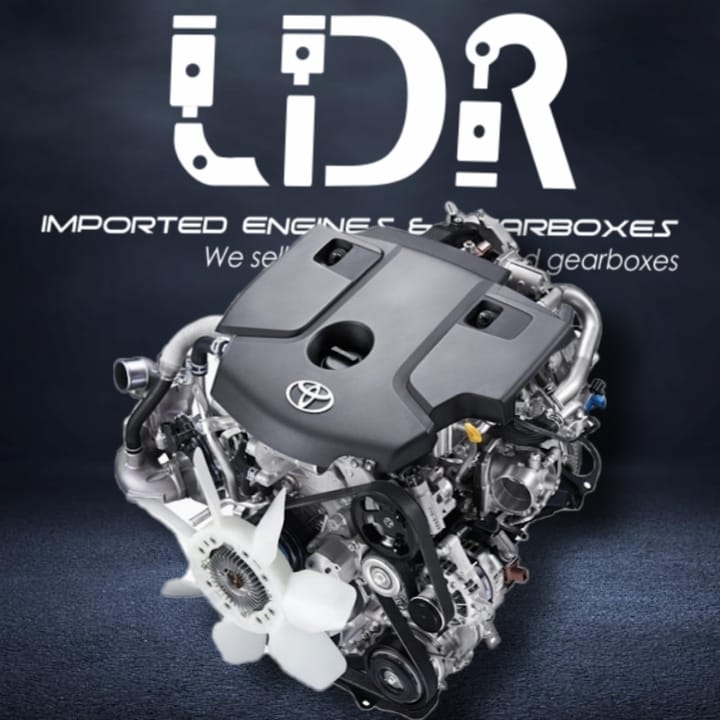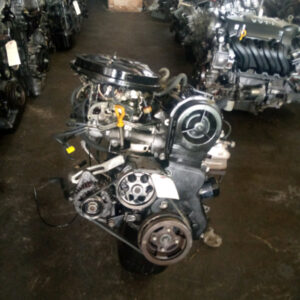Discover the current Trends in Engine Technology Via Tazz
In the rapidly developing landscape of automobile modern technology, Tazz stands at the center, highlighting significant developments in engine systems that prioritize both technology and sustainability. From crossbreed engines that maximize fuel efficiency to the emergence of hydrogen gas cells, the trends shaping modern powertrains are not just improving efficiency yet additionally dealing with vital ecological difficulties.
Crossbreed Engine Innovations
Crossbreed engine advancements stand for an essential shift in vehicle technology, combining the advantages of inner combustion engines with electrical propulsion systems. This assimilation not just enhances gas effectiveness however also minimizes discharges, conference increasingly stringent ecological policies. By using both power resources, hybrid engines can optimize performance, supplying power when needed while preserving gas during less requiring motoring conditions.
Recent innovations in hybrid innovation consist of enhancements in battery efficiency and regenerative stopping systems. These innovations permit greater power recovery throughout deceleration, which can be rerouted to assist in acceleration or power auxiliary systems. In addition, makers are concentrating on small layouts and lightweight materials to optimize the performance of hybrid powertrains.
The growth of plug-in crossbreeds has additionally broadened the marketplace, making it possible for vehicle drivers to charge their vehicles making use of standard electric outlets. This attribute frequently enables for significant all-electric range, additional reducing reliance on typical gas. tazz. As the automotive industry continues to progress, hybrid engine technologies are expected to play a crucial role in bridging the gap between standard vehicles and totally electrical designs, giving a transitional option that accommodates varied consumer needs and choices
Advances in Electric Powertrains
The auto landscape is quickly evolving, with electric powertrains becoming a leading pressure in sustainable transportation. Advances in electrical lorry (EV) technology are significantly boosting efficiency, performance, and customer experience. Trick advancements include enhancements in battery chemistry, which have enhanced power density, reduced billing times, and extended general battery life.
Solid-state batteries, for instance, promise to change the marketplace by offering better safety and effectiveness contrasted to traditional lithium-ion cells. Innovations in regenerative stopping systems are enabling cars to recuperate energy throughout deceleration, contributing to overall effectiveness.
Along with battery modern technology, electrical motor designs are coming to be more sophisticated. Advancements such as integrated motors and advanced thermal monitoring systems are aiding to optimize power shipment and minimize weight, ultimately enhancing lorry dynamics.

Collectively, these advancements underscore the dedication to transition towards cleaner, much more efficient transportation services, placing electric powertrains at the leading edge of automotive innovation.
The Rise of Hydrogen Gas Cells
Significantly, hydrogen fuel cells are gaining grip as a viable alternative to typical interior combustion engines and battery electrical vehicles. This modern technology uses the chemical power saved in hydrogen, transforming it into electricity via an electrochemical response with oxygen. The main by-product of this process is water, making hydrogen gas cells an ecologically pleasant option with zero exhausts at the tailpipe.

Car manufacturers are increasingly buying hydrogen fuel cell technology, recognizing its potential for long-range applications and quick refueling abilities that match traditional fuels. Additionally, fields such as heavy-duty transportation and public transit are especially fit for hydrogen fuel cells, where battery electrical services might Home Page fail due to weight and variety restrictions.
As research and financial investment continue to increase, hydrogen fuel cells are poised to play a substantial function in the future landscape of tidy transportation and power solutions.
Enhancements in Internal Combustion Engines
Innovations in internal burning engine (ICE) innovation are changing traditional lorries to meet contemporary ecological standards and performance assumptions. Direct fuel injection, for circumstances, enables for far better atomization of fuel, leading to even more full burning and improved power outcome.
Furthermore, turbocharging has gotten importance, allowing smaller sized engines to supply higher efficiency without the weight of bigger engines - tazz. This innovation not only improves efficiency however likewise adds to lower gas usage. Variable shutoff timing systems are also being fine-tuned, enabling engines to adapt to different driving conditions for enhanced torque and responsiveness
Moreover, making use of lightweight materials in engine construction is coming to be common, further improving fuel performance by lowering general lorry weight. Engine control systems (ECUs) are increasingly sophisticated, allowing real-time modifications that enhance efficiency and emissions.
These enhancements collectively indicate a critical change in ICE technology, straightening with global sustainability goals while still offering the performance vehicle drivers get out of their vehicles. As the industry evolves, these enhancements remain to shape the future of typical automobile design.
Future Trends in Engine Effectiveness
Considerable advancements in engine effectiveness are anticipated as manufacturers concentrate on integrating innovative innovations to fulfill rigid environmental laws and consumer needs. The shift in the direction of electrification, crossbreed systems, and alternative fuels is improving the auto landscape, driving technologies that improve gas economic climate and decrease discharges.
Among the key trends is the application of innovative products and manufacturing strategies. Lightweight compounds and high-strength alloys add to decreased vehicle weight, therefore boosting overall performance. In addition, the fostering of turbocharging and variable valve timing browse around here modern technologies enables for enhanced power output from smaller engines, better boosting gas economy.

Final Thought
To conclude, the expedition of engine modern technology exposes substantial advancements that focus on sustainability and efficiency. Developments in hybrid engine systems, electric powertrains, and hydrogen gas cells demonstrate a dedication to lowering discharges while improving performance. Enhancements in inner burning engines and a focus on light-weight materials contribute to overall engine effectiveness. As the automobile sector proceeds to develop, these trends will certainly play an essential role fit a cleaner and even more sustainable future for transport.
From crossbreed engines that optimize fuel efficiency to the development of hydrogen gas cells, the patterns forming modern powertrains are not only boosting performance however additionally resolving vital ecological obstacles.Crossbreed engine technologies stand for an essential change in automotive innovation, incorporating the advantages of inner combustion engines with electric propulsion systems.In addition, turbocharging has actually acquired importance, allowing smaller sized engines to supply greater performance without the weight of larger engines. In addition, the fostering of turbocharging and variable valve timing technologies allows for improved power output from smaller engines, better improving gas economic climate.
Enhancements in internal combustion engines and an emphasis on lightweight materials add to total engine performance.